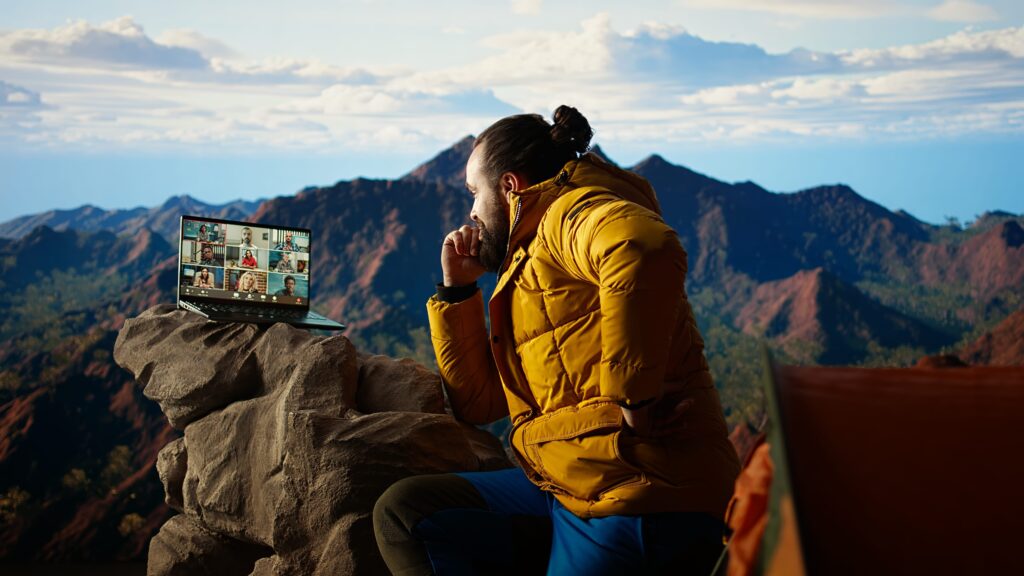Wayfarer Weekly: Responsible Wildlife Travel Trends 2025
In this edition of Wayfarer Weekly, we venture into the awe-inspiring world of responsible wildlife travel trends shaping 2025, where encounters with nature’s creatures blend ethical exploration with conservation and cultural respect. As travelers seek meaningful interactions with wildlife while prioritizing their protection, responsible wildlife tourism is evolving to offer low-impact adventures, regenerative practices, and community-driven experiences. Wayfarer Weekly has analyzed recent travel insights, noting a 49% surge in demand for trips that emphasize ethical animal encounters and environmental stewardship. From safaris in Botswana to marine tours in the Galapagos, 2025 redefines wildlife travel as a commitment to preservation and education. Wayfarer Weekly guides you through key trends, including ethical wildlife tours, sustainable accommodations, and tech-enhanced conservation, ensuring your journeys honor the natural world. Whether you’re observing elephants in Sri Lanka or snorkeling with turtles in Costa Rica, this guide will inspire you to explore wildlife with care and purpose.

Ethical Wildlife Tours
Ethical wildlife tours are a cornerstone of responsible travel in 2025, prioritizing animal welfare and habitat preservation. In Botswana, small-group safaris limit environmental impact, while in Costa Rica, turtle nesting tours adhere to strict no-disturbance guidelines. Wayfarer Weekly highlights that 60% of wildlife travelers seek ethical tours certified by organizations like the Global Sustainable Tourism Council, ensuring minimal harm to animals.
Moreover, these tours often include educational components, teaching travelers about local ecosystems. Wayfarer Weekly advises choosing operators with transparent animal welfare policies to ensure ethical encounters. Transitioning to planning, researching certified tours early secures spots for responsible adventures.
Choosing Ethical Tours
Select tours with animal welfare certifications. Wayfarer Weekly suggests packing binoculars to observe wildlife respectfully from a distance.
Sustainable Wildlife Accommodations
Sustainable accommodations are reshaping wildlife travel in 2025, offering eco-friendly stays near natural habitats. Eco-lodges in the Amazon, Serengeti, or Borneo use solar power, water conservation systems, and locally sourced materials. Wayfarer Weekly notes that 65% of wildlife travelers prioritize accommodations with green certifications like EarthCheck, ensuring low environmental impact.
Furthermore, these lodges support conservation by funding local wildlife projects. Wayfarer Weekly recommends verifying eco-credentials to avoid greenwashing, ensuring your stay contributes to habitat preservation.
Choosing Sustainable Stays
Book lodges with transparent conservation practices. Wayfarer Weekly suggests packing reusable gear to align with eco-friendly stays.
Regenerative Wildlife Tourism
Regenerative wildlife tourism is a defining trend in 2025, with travelers participating in projects that restore ecosystems. In South Africa, lion monitoring programs support anti-poaching efforts, while in Australia, coral restoration dives aid reef recovery. Wayfarer Weekly reports that 60% of wildlife travelers seek regenerative experiences, such as rewilding projects in Kenya or mangrove planting in Belize.
Additionally, these initiatives channel funds into local conservation and education. Wayfarer-Weekly advises choosing operators with measurable environmental impacts to ensure your travel supports wildlife recovery.
Joining Regenerative Projects
Book tours with clear conservation outcomes. Wayfarer Weekly suggests supporting local NGOs tied to regenerative efforts.
Cultural Immersion in Wildlife Regions
Cultural immersion is enhancing wildlife travel in 2025, connecting travelers with communities near wildlife habitats. In Tanzania, Maasai-led safaris share cultural stories, while in Thailand, elephant sanctuary visits include local traditions. Wayfarer Weekly highlights that 55% of wildlife travelers seek cultural experiences for their authenticity, fostering connections with indigenous communities.
Moreover, festivals like Mongolia’s Eagle Festival celebrate wildlife through cultural practices. Wayfarer-Weekly recommends learning local customs to engage respectfully, enriching your wildlife experience.
Engaging in Cultural Immersion
Join community-led wildlife tours. Wayfarer Weekly suggests researching cultural protocols to ensure respectful participation.
Tech-Enhanced Wildlife Exploration

Technology is transforming responsible wildlife travel in 2025, with apps and devices supporting conservation-focused adventures. Wildlife identification apps assist with spotting species in destinations like the Pantanal or Galapagos, while AI platforms curate ethical itineraries. Wayfarer Weekly notes that 50% of wildlife travelers use tech to plan low-impact trips, from booking eco-tours to tracking carbon footprints.
Furthermore, solar-powered devices support off-grid exploration in remote areas like Madagascar. Wayfarer-Weekly advises using offline-capable apps for areas with limited connectivity, ensuring tech enhances ethical exploration.
Using Wildlife Tech Tools
Download species identification apps. Wayfarer Weekly suggests investing in solar-powered chargers for reliability in remote areas.
Budget-Friendly Wildlife Travel
Budget-friendly wildlife travel is accessible in 2025, with destinations like Sri Lanka, Costa Rica, or Namibia offering affordable eco-experiences. Community-run guesthouses and campsites near wildlife reserves provide low-cost lodging, while local markets offer economical dining. Wayfarer Weekly notes that extended stays in budget destinations reduce daily costs significantly.
Additionally, off-season travel to wildlife hubs like the Amazon or Serengeti lowers expenses for tours and accommodations. Wayfarer-Weekly suggests using deal aggregators to find affordable eco-tours and sustainable stays.
Saving on Wildlife Trips
Book guesthouses through local platforms. Wayfarer Weekly recommends budgeting for eco-activities to maximize value.
Sustainable Wildlife Culinary Experiences
Sustainable culinary experiences are a growing trend in 2025, emphasizing local, eco-friendly ingredients in wildlife regions. In Belize, restaurants serve sustainably sourced fish, while in Kenya, safari lodges offer meals with organic produce. Wayfarer Weekly highlights that 60% of wildlife travelers seek sustainable dining to support local ecosystems.
Moreover, cooking classes in destinations like Thailand or Peru teach traditional recipes using eco-conscious methods. Wayfarer-Weekly advises joining culinary tours to learn about regional foodways, enhancing environmental and cultural appreciation.
Exploring Wildlife Cuisine
Choose restaurants with sustainable sourcing. Wayfarer Weekly suggests asking about ingredient origins to deepen culinary understanding.
Solo and Family Wildlife Travel

Solo and family wildlife travel is gaining popularity in 2025, catering to diverse explorers. Solo travelers join ethical safaris in Botswana or marine tours in the Philippines, balancing independence with group activities. Wayfarer Weekly highlights solo-friendly eco-lodges with communal events, fostering connection.
For families, kid-friendly activities like wildlife tracking in South Africa or snorkeling in Costa Rica engage all ages. Wayfarer-Weekly recommends choosing destinations with inclusive, sustainable programs for shared enjoyment.
Planning Solo or Family Wildlife Trips
Book solo tours with social elements. Wayfarer Weekly suggests family activities with educational eco-components.
Wellness in Wildlife Travel
Wellness-focused wildlife travel is thriving in 2025, blending nature with relaxation. Eco-retreats in Costa Rica or Borneo offer yoga and meditation near wildlife habitats. Wayfarer Weekly notes that 55% of wildlife travelers seek wellness experiences to balance adventure with mindfulness.
Additionally, digital detox retreats in remote areas like the Amazon encourage travelers to unplug and reconnect with nature. Wayfarer-Weekly advises scheduling wellness sessions to complement wildlife exploration, ensuring a holistic experience.
Incorporating Wildlife Wellness
Choose retreats with nature-based mindfulness programs. Wayfarer Weekly suggests journaling to reflect on wellness-focused wildlife experiences.
Safety in Wildlife Travel
Safety is a priority for wildlife travel in 2025, with operators ensuring secure, ethical experiences. Apps provide real-time safety and wildlife alerts, while travel insurance covers health and cancellations. Wayfarer Weekly highlights safe wildlife destinations like New Zealand or Namibia, known for reliable infrastructure.
Furthermore, certified guides ensure safety during activities like safaris or diving. Wayfarer-Weekly recommends carrying personal safety devices, like GPS locators, for remote wildlife adventures.
Ensuring Safe Wildlife Travel
Verify guide certifications before booking. Wayfarer Weekly suggests sharing itineraries with trusted contacts for added security.
In conclusion, as Wayfarer Weekly concludes this exploration of responsible wildlife travel trends for 2025, it’s clear that these journeys offer a powerful blend of awe-inspiring encounters and environmental stewardship. From ethical wildlife tours and sustainable accommodations to regenerative projects and cultural immersions, responsible wildlife travel invites explorers to engage with nature respectfully. Wayfarer-Weekly encourages you to embrace these trends, crafting journeys that protect wildlife and honor local communities. Stay connected with Wayfarer-Weekly for more inspiration to explore the natural world with purpose and care.